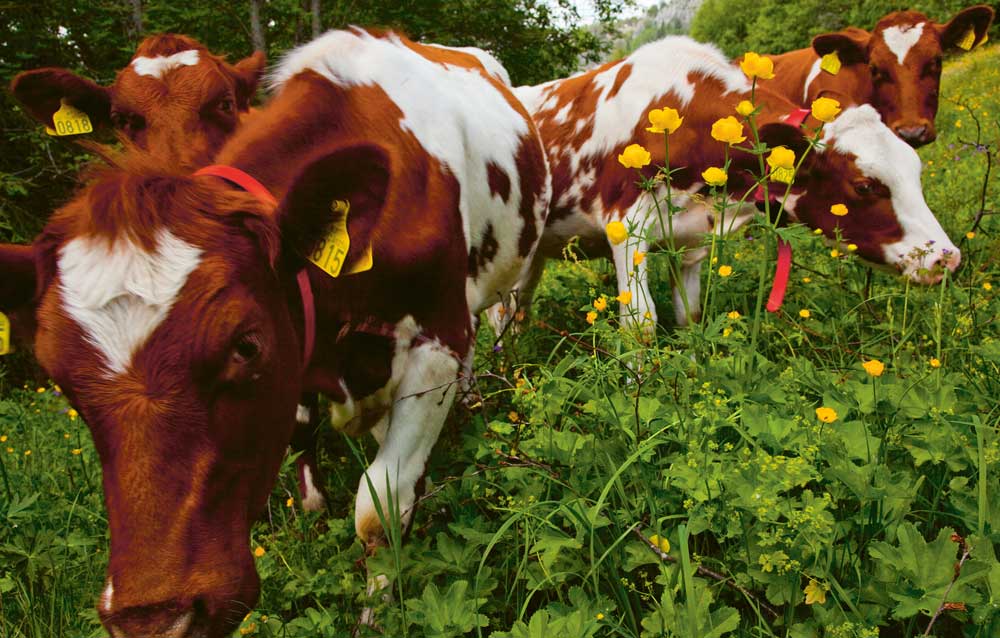Task 8 – Stop ruminating
Task 8
Passion kills rumination

“Did you know that there are some city people who think that a calf just grows up and begins to give milk when it is big!” The farmer that we stayed overnight with on our pilgrimage to Nidaros was in despair. “But what is wrong with thinking that?” I asked while I chewed an egg at breakfast. The fact that a cow had to give birth to a calf first before it was able to produce milk was something completely new for a well-educated 40-year old like myself. Going on a long pilgrimage is one way to find fresh ideas and lose ruminating thoughts. Photography is another. Rumination, by the way, works best for cows.
Sør-Fron, Norway, 2011. Photo: Torkil Færø
Problem
Ruminating on heavy thoughts
At my doctor’s office, I do suicide assessments weekly. At the most I have had three such patients on the same day. I try to get them to describe how they are feeling so I can present the case to the psychiatrist on duty. Early on in my career, I thought they were capable of saying a little about their reasons for considering such a devastating option. Particularly because they, in their words, had not thought about anything else for a long time.
It turned out that they would give the same exact answers again and again. They didn’t manage to say anything other than “Everything looks hopeless”, “I don’t see any way out”, “I am completely worthless”, “Everyone would be better off without me”, “I can’t take it anymore”, and other ones like these. When I would once again ask them about what they were anxious about or tired of, they would repeat the same answers. Often the minds of suicidal people grind on the same thoughts around the clock without them being able to get out of this self-destructive spiral.
Rumination involves allowing negative thinking to circulate in our heads. This can be misinterpreted as being reflective. Even though doing this in small doses can perhaps help us find out what’s gone wrong and how we can change things, we may still have gotten another problem when we aren’t able to exit the thoughts with a solution. We don’t have an in-built defense against our thoughts being hijacked like this, and there is a historic cause for this. Our hunter/gatherer ancestors never had much time for themselves and they were constantly engaged in communal, constructive activities.
The lack of an activity that is fuelled by passion is common to most of the seriously depressed patients I treat. And opposite, as a doctor I rarely meet people driven by a passion. But I meet them often teaching photography. Even if photography is not your passion, you can use it to search for one. And fortunately, it is very hard to ruminate on depressing thoughts while we are out looking for pictures.
How relevant is this issue for you on a scale of 1 to 6?
Solution
Engage yourself in a passion
I could have written a very short task description in order to curb our ruminating, such as: Photograph! That stops the mental activity taking place efficiently.
After I had made a documentary film about the pilgrimage to Santiago de Compostela in 2004, I was quite involved in the pilgrimage milieu in Norway. We have held photography workshops on pilgrimages in Palestine/Israel, Ethiopia and Cuba. This dedicated group of people meet regularly, show their pictures and discuss their walks. As a doctor it is not difficult for me to perceive what is healing about having such an interest. The intensity in their eyes and the vitality in their body language show that there is no one there that is likely to be depressed anytime soon. Enthusiasm is the outward sign of an inner passion.
Doing a pilgrimage is only one possible activity. A quick look in a local newspaper or on community bulletin boards demonstrate an impressive variety of activities to take part in. We can choose from all kinds of pleasurable, healthy pursuits such as flying model airplanes, photography, the Red Cross, dancing, singing in a choir, hiking, bingo, politics, arts and crafts, winter swimming, sports, etc. It probably doesn’t matter what we choose to do. A sense of togetherness and interest promotes the release of oxytocin and keeps cortisol at bay.
Take a look around you. Do you know someone filled with enthusiasm and passion? How does that affect their lives and their relationships? Could you photograph him/her in the next task, while discovering their secrets?
PHOTO ASSIGNMENT:
Photograph your passion, if you have one, and if you do not have one, take pictures of something you would like to do. Notice how difficult it is to be in the grip of heavy thoughts when you photograph!
How useful was this task for you on a scale of 1 to 6?
BOOK SUGGESTION: The Element: How Finding Your Passion Changes Everything by Ken Robinson. Also see TED.com
❞ If you are someone who tends to ruminate, or who suffers from anxiety and depression, it’s important that you don’t judge yourself for this way of being.
Kristin Neff
❞If you move in the direction of your passions, opportunities tend to appear that you couldn’t have imagined and that weren’t otherwise there.
Joseph Campbell
❞ If you observe a really happy man, you will find him building a boat, writing a symphony, educating his son, growing double dahlias in his garden, or looking for dinosaur eggs in the Gobi desert. He will not be searching for happi- ness as if it were a collar button that has rolled under a radiator.
W. Beran Wolfe
[note_editor]

